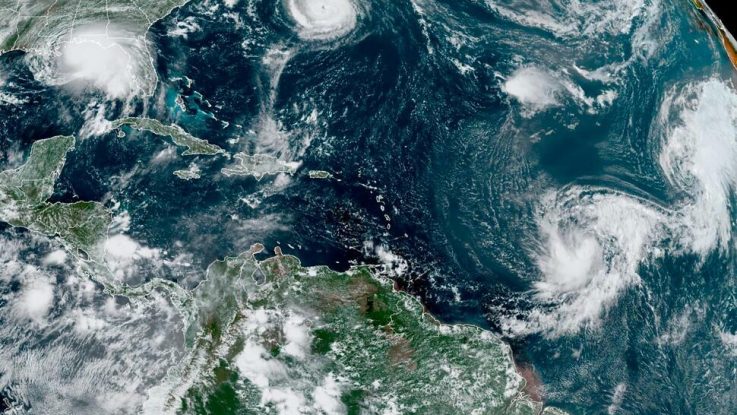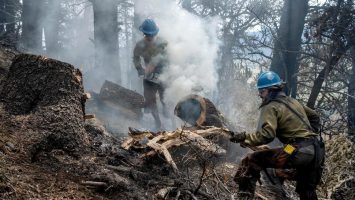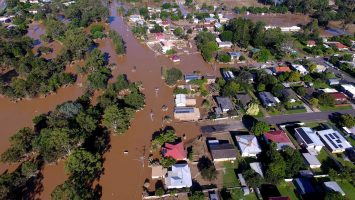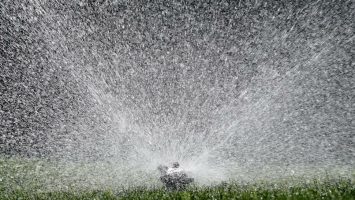
By SETH BORENSTEIN, AP Science Writer
Cleaner air in United States and Europe is blending more Atlantic tropical storms, another U.S. government concentrate on found.
The National Oceanic and Atmospheric Administration concentrate on joins changes in regionalized air contamination across the globe to storm movement going both all over. A half abatement in contamination particles and beads in Europe and the U.S. is connected to a 33% increment in Atlantic tempest development in the past years and years, while the inverse is going on in the Pacific with additional contamination and less hurricanes, as per the review distributed in Wednesday’s Science Advances.
NOAA typhoon researcher Hiroyuki Murakami ran various environment programmatic experiences to make sense of progress in storm movement in various pieces of the globe that can’t be made sense of by normal environment cycles and tracked down a connection to spray contamination from industry and vehicles — sulfur particles and beads in the air that make it hard to inhale and see.
Researchers had long realized that spray contamination cools the air, now and again decreasing the bigger impacts of ozone harming substances from the copying of non-renewable energy source and prior examinations referenced it as a chance in expansion in Atlantic tempests, yet Murakami tracked down it an element all over the planet and a more straightforward connection.
Typhoons need warm water — which is warmed by the air — for fuel and are hurt by wind shear, which changes in upper level breezes that can behead storm tops. Cleaner air in the Atlantic and dirtier air in the Pacific, from contamination in China and India, meddle with both of those, Murakami said.
In the Atlantic, spray contamination crested around 1980 and has been dropping consistently since. That implies the cooling that veiled a portion of the ozone depleting substance warming is disappearing, so ocean surface temperatures are expanding much more, Murakami said. On top of that the absence of cooling vapor sprayers has helped push the fly stream — the waterway of air that moves climate from west to east on an exciting ride like way — further north, diminishing the shear that had been hosing tropical storm arrangement.
“That is the reason the Atlantic has gone essentially off the deep end since the mid-90s and why it was so calm during the 70s and 80s,” said environment and storm researcher Jim Kossin of the gamble firm The Climate Service. He wasn’t essential for the concentrate yet said it seems OK. The spray contamination “gave a many individuals during the 70s and 80s a break, however all of us are paying for it now.”
There are different elements in typhoon action with La Nina and El Nino — regular variances in central Pacific temperatures that adjust environment overall — being immense. Human-caused environmental change from ozone depleting substances, that will develop as spray contamination decreases level out, is another, and there other normal long haul climatic motions, Murakami said.
Environmental change from ozone harming substances is supposed to diminish the general number of tempests somewhat, yet increment the number and strength of the most extraordinary typhoons, make them wetter and increment storm flood flooding, Murakami, Kossin and different researchers said.
While spray cooling is perhaps half to 33% more modest than the warming from ozone harming substances, it is about two times as viable in diminishing typhoon force contrasted with warming expanding it, said Columbia University environment researcher Adam Sobel, who wasn’t essential for the review. As spray contamination stays at low levels in the Atlantic and ozone harming substance emanations develop, environmental change’s effect on tempests will increment later on and become more unmistakable, Murakami said.
In the Pacific, spray contamination from Asian countries has increased half from 1980 to 2010 and is beginning to drop now. Hurricane development from 2001 to 2020 is 14% lower than 1980 to 2000, Murakami said
Murakami additionally found a connection that was a piece different traveling south. A drop in European and American spray contamination changed worldwide air designs such that it implied a decline in southern side of the equator storms around Australia
Yet, however much more typhoons in the Atlantic can be an issue, the demise from additional tempests don’t measure up to the 7,000,000 individuals a year around the world who bite the dust from air contamination, expressed University of Washington general wellbeing teacher Kristie Ebi, who concentrates on wellbeing, environment and outrageous climate.
“Air contamination is a significant executioner, so decreasing discharges is basic regardless occurs with the quantity of twisters,” said Ebi, who wasn’t important for the review.




Leave a Reply